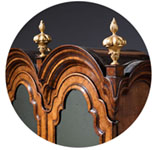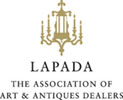An Elegant and Rare George II Pollard Oak and Walnut Card Table, Circa 1740
£15,900
Follow Us
An Elegant and Rare George II Pollard Oak and Walnut Card Table, Circa 1740
An Elegant and Rare George II Pollard Oak and Walnut Card Table, Circa 1740. England
This remarkable George II card table, dating to circa 1740, is a superb example of 18th-century English craftsmanship, blending functionality with exceptional design and materials.
The rectangular top is veneered in striking pollard oak, beautifully cross-banded in walnut and finely strung with ebony and boxwood. Its moulded edge and shaped corners highlight meticulous attention to detail and refinement.
The table opens via the favoured concertina action, revealing a baize-lined playing surface inset with four circular counter wells and corner candle stands, all veneered with the same exquisite pollard oak.
A single drawer, fitted with its original brass escutcheon and handle, offers practical storage for game pieces or cards, maintaining its functional appeal.
The table is raised on four gracefully shaped cabriole legs, each finely carved with acanthus leaves at the knees and tapering to delicate pad feet. The proportions and quality of the carving exemplify the sophistication of George II design.
The table is in excellent condition, retaining its original brass hardware and showcasing a rich, warm patina developed over centuries. The baize playing surface has been sensitively restored to ensure usability while preserving the table’s historical integrity.
Historical Significance:
Card tables such as this were both practical and decorative, serving as elegant focal points in Georgian drawing rooms. Their design and craftsmanship reflect the cultural and social importance of gaming in 18th-century England.
This exquisite table is not only a functional piece of furniture but also a timeless testament to Georgian design. It would make a striking addition to any distinguished collection or interior, exuding elegance and historical charm.
Condition
Good. Wear consistent with age and use.
Dimensions
Dimensions on request.
PREVIOUSLY SOLD
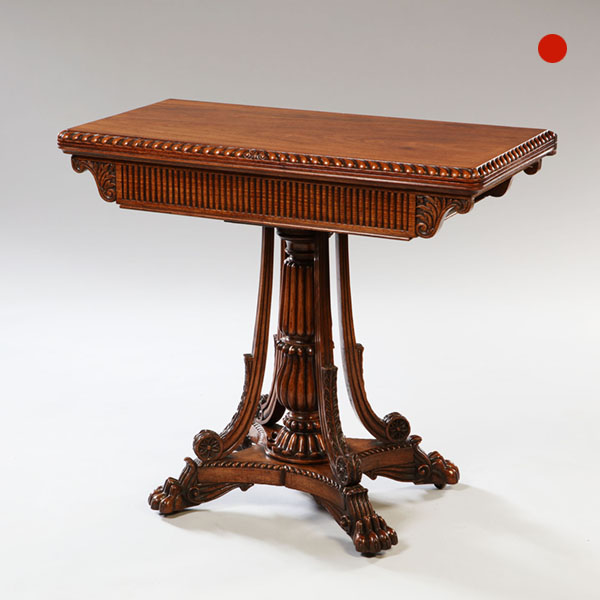
Solid Padauk Carved Anglo-Indian Card Table
Solid Padauk Carved Anglo-Indian Card Table. With the growth of trade and military power, the East India Company encouraged its British male employees to create a community with mixed ancestry. The company paid 15 silver rupees to the mother of any child born of such marriages.
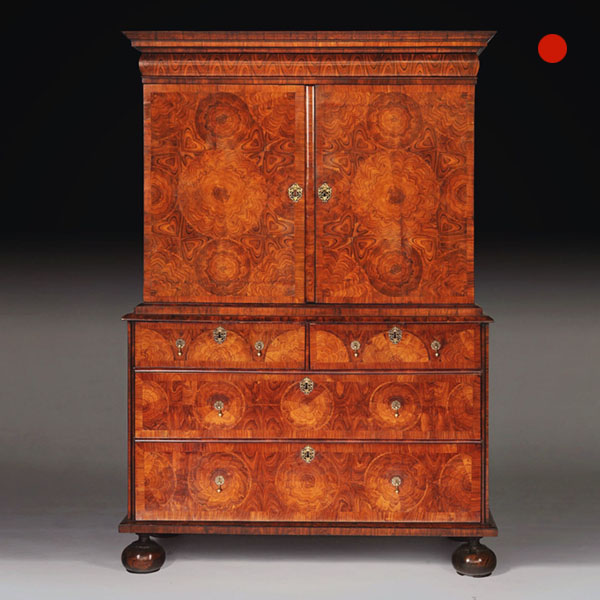
William and Mary Kingwood or ‘Princes’ wood oyster cabinet on chest
When the most expensive timber of the 17th century met Thomas Pistor. There were, in fact, two cabinet-makers called Thomas Pistor, father and son, working for a period at the same time but at different premises. One or both are known to have made furniture of quality for Levens Hall.
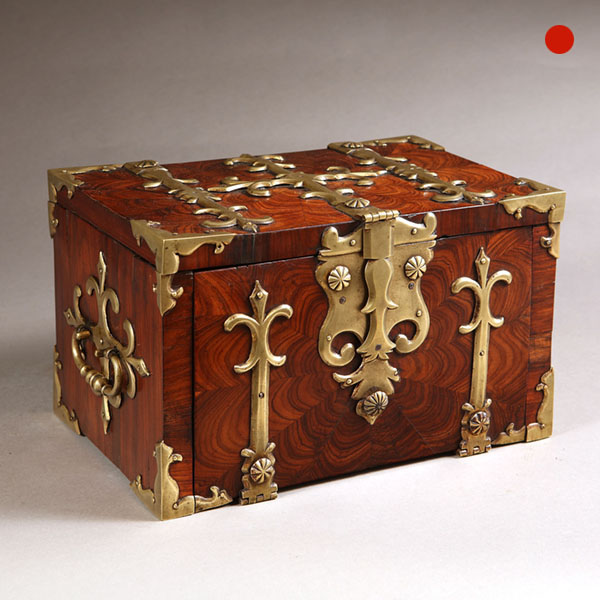
17th Century William and Mary Kingwood Strongbox
A 17th century William and Mary Kingwood strongbox, with gilt brass straps. This strongbox has to be one of the most charming and certainly the smallest example we have encountered, at just 17.5 cm high, 28 cm wide and 18 cm deep. A strongbox of similar merit form and style resides at Burghley House in ‘The 1st George State Room.
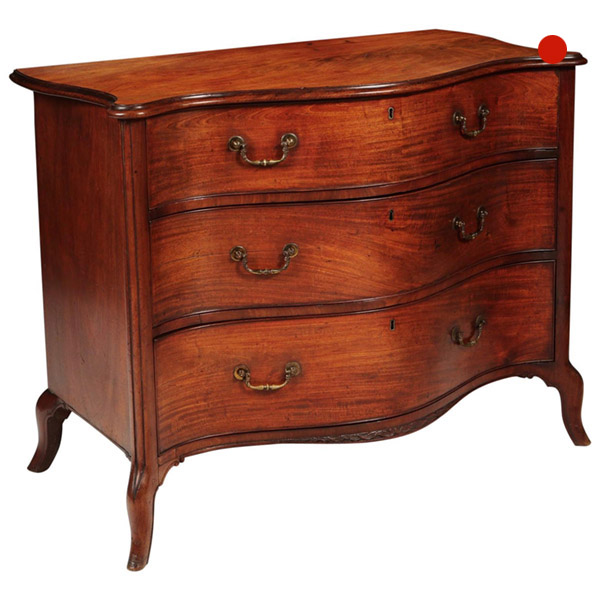
18th Century George III Mahogany Serpentine Chest or Commode
A fine George III mahogany serpentine commode, England, circa 1770. Attributed to Henry Hill, Marlborough. The three graduated drawers retain their original gilt brass handles over a unique carved apron and flanked by moulded angles continuing into the shaped cabriole feet.
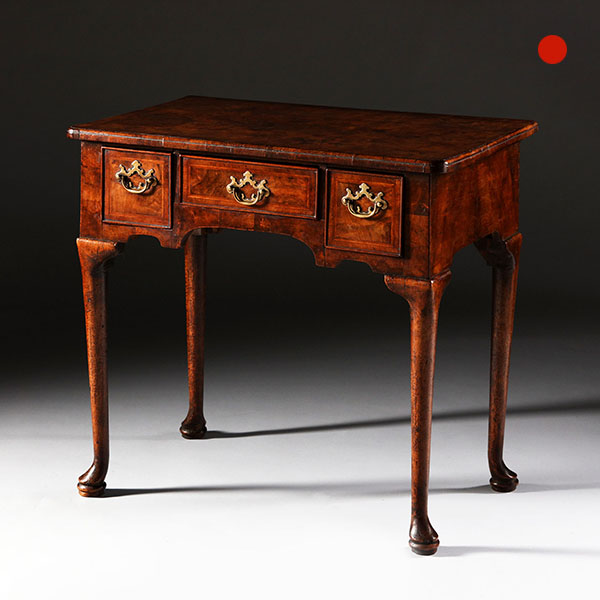
George I Burr and Highly Figured Walnut Lowboy, Circa 1720
George I Burr and Highly Figured Walnut Lowboy Circa 1720. England SOLD Follow UsGeorge I Burr and Highly Figured Walnut Lowboy, Circa 1720. England The feather and cross banded top is quarter veneered with burr walnut and edged with a...
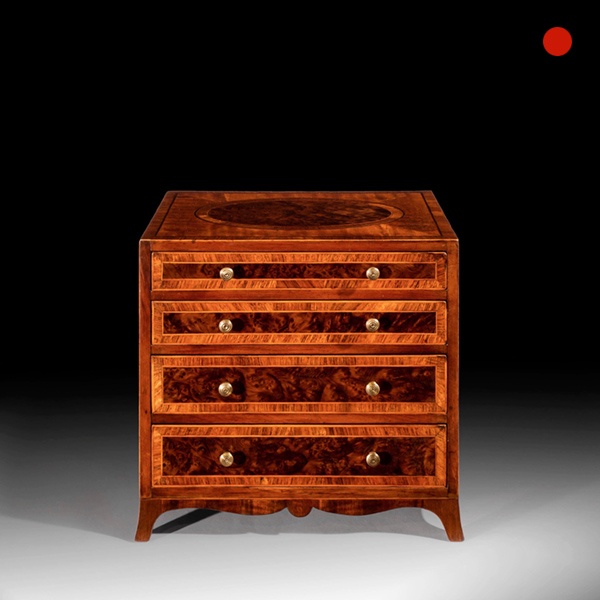
18th-Century George III fitted miniature burr yew and satinwood chest attributed to Ince and Mayhew
A perfectly proportioned miniature chest attributed to Ince and Mayhew. The miniature is of a style that thrived in the latter part of the 18th century, proving popular with nobility and the middle classes. I am not aware of another miniature chest thought to be by eminent makers.

Solid Padauk Carved Anglo-Indian Card Table
Solid Padauk Carved Anglo-Indian Card Table. With the growth of trade and military power, the East India Company encouraged its British male employees to create a community with mixed ancestry. The company paid 15 silver rupees to the mother of any child born of such marriages.

William and Mary Kingwood or ‘Princes’ wood oyster cabinet on chest
When the most expensive timber of the 17th century met Thomas Pistor. There were, in fact, two cabinet-makers called Thomas Pistor, father and son, working for a period at the same time but at different premises. One or both are known to have made furniture of quality for Levens Hall.

17th Century William and Mary Kingwood Strongbox
A 17th century William and Mary Kingwood strongbox, with gilt brass straps. This strongbox has to be one of the most charming and certainly the smallest example we have encountered, at just 17.5 cm high, 28 cm wide and 18 cm deep. A strongbox of similar merit form and style resides at Burghley House in ‘The 1st George State Room.

18th Century George III Mahogany Serpentine Chest or Commode
A fine George III mahogany serpentine commode, England, circa 1770. Attributed to Henry Hill, Marlborough. The three graduated drawers retain their original gilt brass handles over a unique carved apron and flanked by moulded angles continuing into the shaped cabriole feet.

George I Burr and Highly Figured Walnut Lowboy, Circa 1720
George I Burr and Highly Figured Walnut Lowboy Circa 1720. England SOLD Follow UsGeorge I Burr and Highly Figured Walnut Lowboy, Circa 1720. England The feather and cross banded top is quarter veneered with burr walnut and edged with a...

18th-Century George III fitted miniature burr yew and satinwood chest attributed to Ince and Mayhew
A perfectly proportioned miniature chest attributed to Ince and Mayhew. The miniature is of a style that thrived in the latter part of the 18th century, proving popular with nobility and the middle classes. I am not aware of another miniature chest thought to be by eminent makers.
YOU MAY ALSO LIKE

17th Century Lantern Alarm Clock by Johannes Quelch, Oxford
17th Century Lantern Alarm Clock by Johannes Quelch, Oxford £14,000Follow Us17th Century Lantern Alarm Clock by Johannes Quelch, Oxford An English 17th century lantern clock made of brass and iron, circa 1665-1670. The clock consists of going...
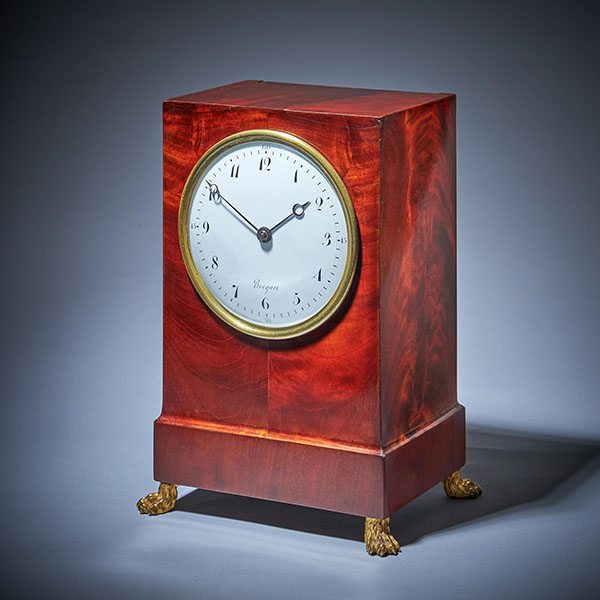
19th-Century Flame Mahogany Mantel Clock by BREGUET Raised by Lion Paw Feet
19th-Century Flame Mahogany Mantel Clock by BREGUET Raised by Lion Paw Feet £23,500Follow Us19th-Century Flame Mahogany Mantel Clock by BREGUET Raised by Lion Paw Feet EXTREMELY RARE MANTEL CLOCK WITH A FIGURED MAHOGANY-VENEERED CASE by A-L...

Unusual Ribbed Eight-Day Repeating Striking Gilt-Brass Gorge Case Carriage Clock
Unusual Ribbed Eight-Day Repeating Striking Gilt-Brass Gorge Case Carriage Clock £4,850Follow UsUnusual Ribbed Eight-Day Repeating Striking Gilt-Brass Gorge Case Carriage Clock CaseThe clock has a gilt-brass case which is a variation on the...
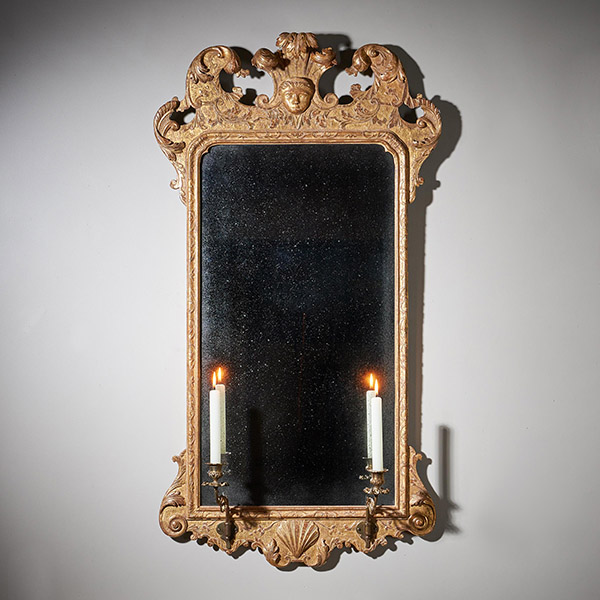
Fine 18th Century George I Gilt Gesso Pier or Console Mirror, Manner of Belchier
Fine 18th Century George I Gilt Gesso Pier or Console Mirror, Manner of Belchier £13,900Follow UsFine 18th Century George I Gilt Gesso Pier or Console Mirror, Manner of Belchier A fine and rare early 18th century George I Gilt Gesso pier or...
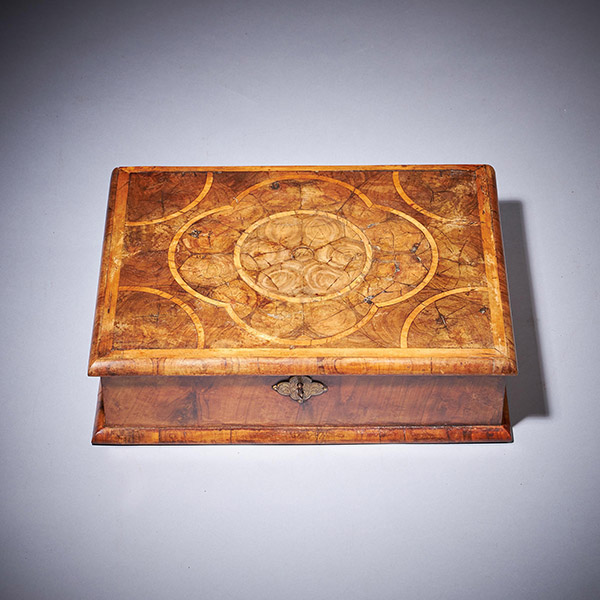
17th Century William and Mary Olive Oyster Lace Box, Circa 1680-1700
17th Century William and Mary Olive Oyster Lace Box, Circa 1680-1700 £3,900Follow Us17th Century William and Mary Olive Oyster Lace Box, Circa 1680-1700 A fine and rare 17th-century William and Mary period olive oyster lace box of perfect...
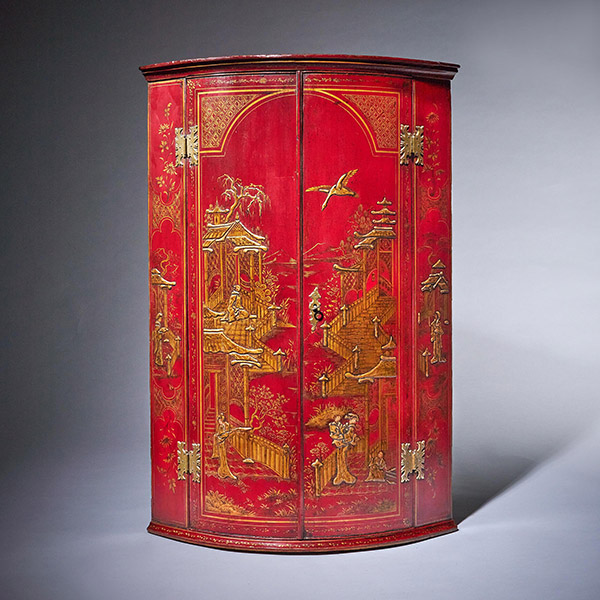
18th Century George II Scarlet-Red Japanned Corner Cupboard Att. Giles Grendey
18th Century George II Scarlet/Red Japanned Corner Cupboard, Att. Giles Grendey Follow Us18th Century George II Scarlet/Red Japanned Corner Cupboard, Att. Giles Grendey A fine and rare early 18th century George II scarlet japanned chinoiserie...

17th Century Lantern Alarm Clock by Johannes Quelch, Oxford
17th Century Lantern Alarm Clock by Johannes Quelch, Oxford £14,000Follow Us17th Century Lantern Alarm Clock by Johannes Quelch, Oxford An English 17th century lantern clock made of brass and iron, circa 1665-1670. The clock consists of going...

19th-Century Flame Mahogany Mantel Clock by BREGUET Raised by Lion Paw Feet
19th-Century Flame Mahogany Mantel Clock by BREGUET Raised by Lion Paw Feet £23,500Follow Us19th-Century Flame Mahogany Mantel Clock by BREGUET Raised by Lion Paw Feet EXTREMELY RARE MANTEL CLOCK WITH A FIGURED MAHOGANY-VENEERED CASE by A-L...

Unusual Ribbed Eight-Day Repeating Striking Gilt-Brass Gorge Case Carriage Clock
Unusual Ribbed Eight-Day Repeating Striking Gilt-Brass Gorge Case Carriage Clock £4,850Follow UsUnusual Ribbed Eight-Day Repeating Striking Gilt-Brass Gorge Case Carriage Clock CaseThe clock has a gilt-brass case which is a variation on the...

Fine 18th Century George I Gilt Gesso Pier or Console Mirror, Manner of Belchier
Fine 18th Century George I Gilt Gesso Pier or Console Mirror, Manner of Belchier £13,900Follow UsFine 18th Century George I Gilt Gesso Pier or Console Mirror, Manner of Belchier A fine and rare early 18th century George I Gilt Gesso pier or...

17th Century William and Mary Olive Oyster Lace Box, Circa 1680-1700
17th Century William and Mary Olive Oyster Lace Box, Circa 1680-1700 £3,900Follow Us17th Century William and Mary Olive Oyster Lace Box, Circa 1680-1700 A fine and rare 17th-century William and Mary period olive oyster lace box of perfect...

18th Century George II Scarlet-Red Japanned Corner Cupboard Att. Giles Grendey
18th Century George II Scarlet/Red Japanned Corner Cupboard, Att. Giles Grendey Follow Us18th Century George II Scarlet/Red Japanned Corner Cupboard, Att. Giles Grendey A fine and rare early 18th century George II scarlet japanned chinoiserie...
